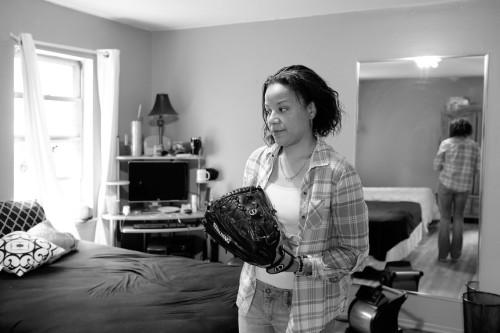Most Artists & Art Critics Are White, Meet The Newest Voice Attempting To Make Diversity In Art A Reality

I was born and raised in what many consider to be the art capital of the world, but didn’t step into a contemporary art gallery until the summer after my first year in college.
I went on to pursue an Art History degree and fell in love with creating, thinking, and writing about art. I grew disappointed with the contemporary art world after college and found that it was saturated with the same voices, same art, and struggled to see where someone like me fit in. I walked around museums and galleries and began assuming the art in front of me was beyond my understanding, or we were being trolled by the artist/institution.
There is a lack of diversity in subjects, voices, and artists represented in major galleries and museums. This is not new. The guerrilla girls, an anonymous group of women activists, have been “creatively complaining” about the lack of diversity in the art world through street projects, stickers, and posters. They began doing this in 1985.

Just last year, the Andrew W. Mellon Foundation, in partnership with the Association of Art Museum Directors (AAMD) and the American Alliance of Museums (AAM), completed the first comprehensive survey to assess the ethnic and gender diversity of the staffs of art museums across the United States. The study provided hard data behind what you experience if you’ve ever worked in a major museum or gallery.
“Women now comprise some 60 percent of museum staffs, with a preponderance of women in the curatorial, conservation and education roles that can be a pipeline toward leadership positions. The survey found no such pipeline toward leadership among staff from historically underrepresented minorities. Although 28 percent of museum staffs are from minority backgrounds, the great majority of these workers are concentrated in security, facilities, finance, and human resources jobs. Among museum curators, conservators, educators and leaders, only 4 percent are African American and 3 percent Hispanic.”
![[no title] 1985-90 by Guerrilla Girls null](https://media.heragenda.com/brand-img/2505/0x0/wp-content/uploads/2016/07/image3.jpeg)
According to The Art Newspaper, nearly one-third of the major solo exhibitions held in US museums between 2007 and 2013 featured artists represented by just five galleries. If the decisions in the art world are being made by people of the same demographic, and the same artists are being shown at art fairs/museums, the visual narrative presented is deceivingly fragmented.
Although the diversity statistics in the art world are grim, I am inspired by the young professionals and leaders who forge ahead in an attempt to make diverse representation a reality. The internet is a millennial’s most formidable weapon. The transformative power of social media, blogs, and art review magazines is very real. Vogue Magazine described Instagram as providing “unparalleled access to a world which has previously been off-limits to those whose pockets don’t run as deep as their enthusiasm for art.”
Self proclaimed “internet kid” and social media manager at The Met, Kim Drew, was recently featured in the New Yorker for her success modernizing art access via digital platforms. With over 100k followers combined across social media accounts, Drew uses her platform to showcase contemporary artists of color. Jasmin Hernandez, a Latina native New Yorker and founder of Gallery Gurls –covers the contemporary art world with a primary focus on female artists, queer artists, and artists of color.
Millennials are on the move and unafraid to pull at the strings of the establishment. NYU professor and author of six books, Arlene Davila, posed an important question in her latest article for Art21 Magazine: How many artists of Basquiat’s background would make it in today’s art world? Sadly, not many.
I look for contemplative work that is challenging, moving, and representative of the diversity and richness of the cultural moment we live in. The exhibition Visions of Confinement currently on view at Hunter East Harlem Gallery focuses on experiences of incarcerated and formerly incarcerated women and their families. I spoke with photographer Sara Bennett, a former criminal defense attorney, and discussed her portraits. I was also fortunate enough to speak with one of the women Bennett followed after release, Keila, a Latina from New York who was imprisoned for 20 years for killing the man who had raped her.
Bennett’s photographs give voice to members of our society that are too often neglected. The photos were featured in the New York Times Metropolitan section and The Washington Post. The full series is available in her self-published photographic essay “Life After Life in Prison”.
Gallery Girl NYC is my spanglish contribution to the dialogue on diverse representation and the product of my exploration through the art world. As a Dominican-American traveling and studying in both countries throughout my childhood, I weave English and Spanish into my everyday vernacular. On the site, you will find art reviews in both languages. To see what I’m up to around the city follow me on Instagram and snapchat: @gallerygirl.nyc + twitter @gallerygirlsnyc!






